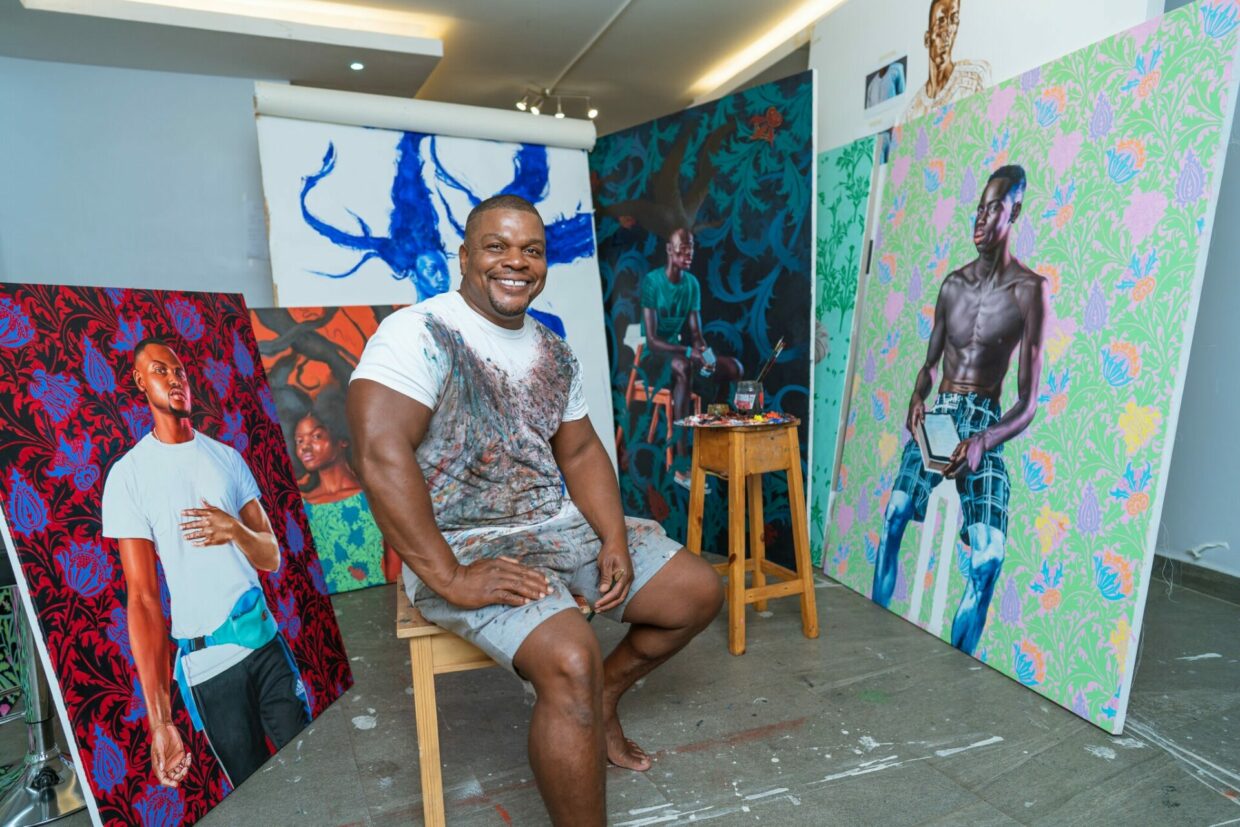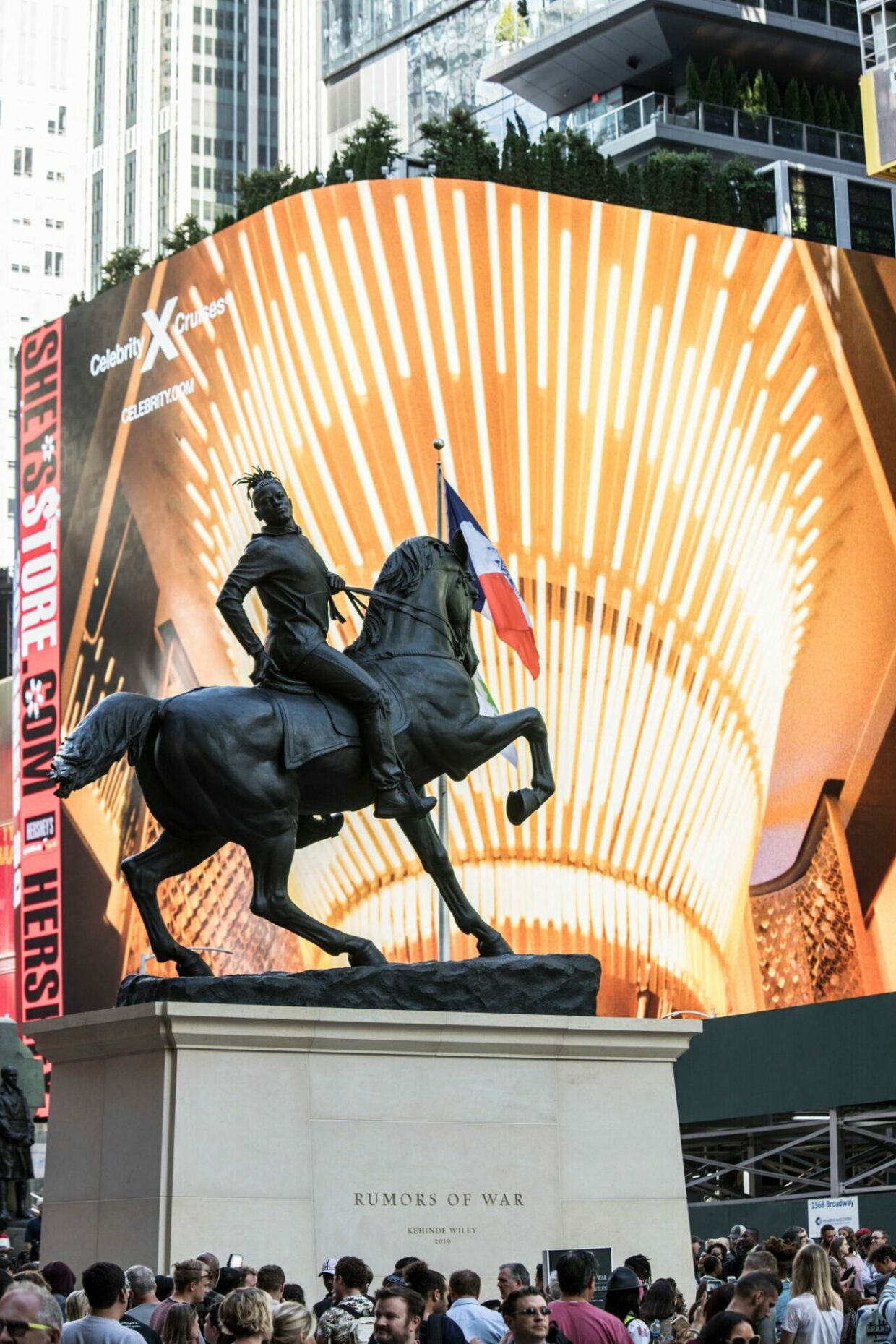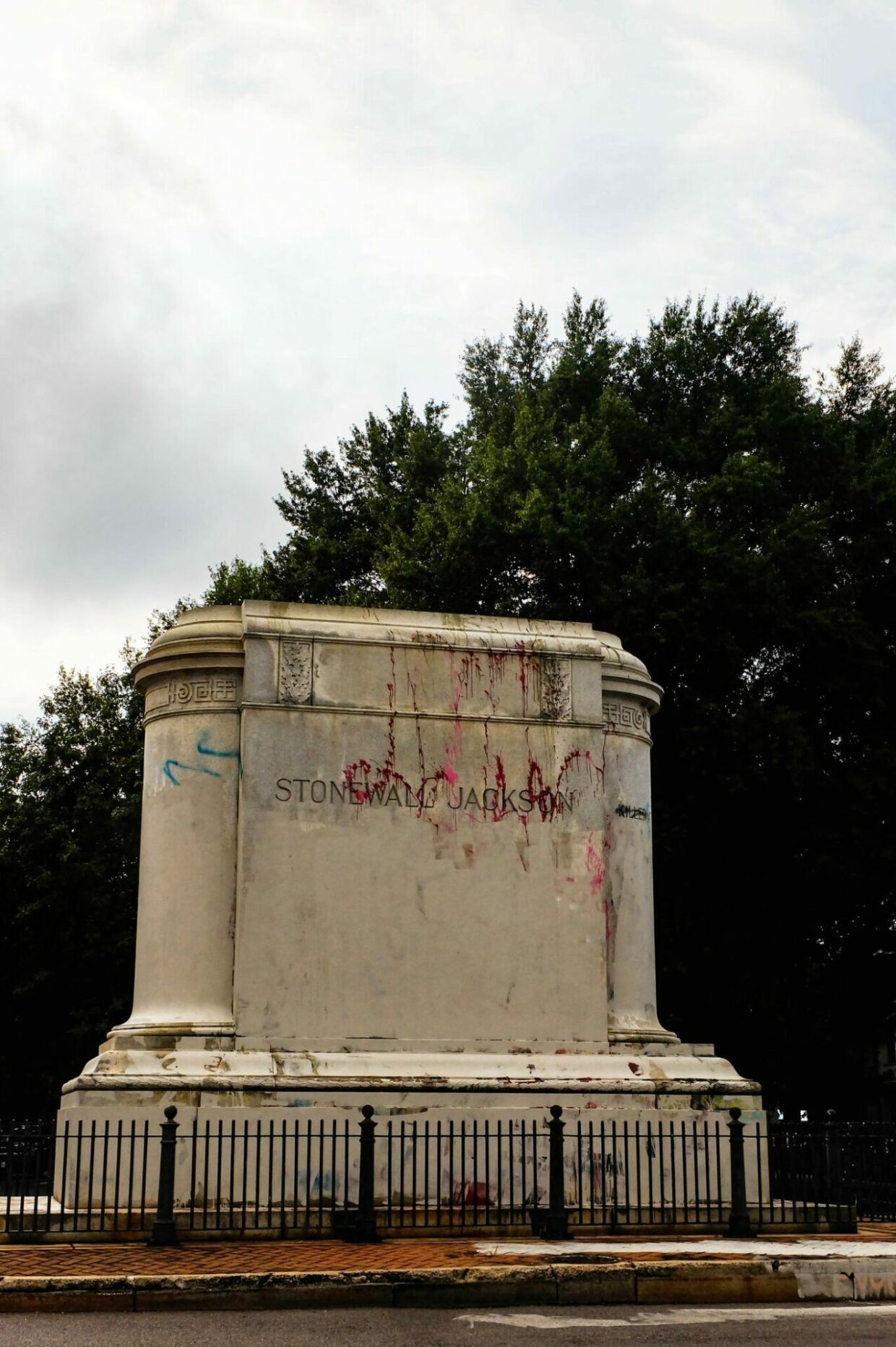Kehinde Wiley on Protests’ Results: ‘I’m Not Impressed Yet’
Aug. 31, 2020
By Dionne Searcey
When Covid-19 started spreading across the globe in late winter and some nations began sealing their borders, the American artist Kehinde Wiley was abroad and quickly had to decide where he wanted to ride out the coming viral storm.
He chose Dakar, Senegal, site of his spacious, magnificently windswept Black Rock studio complex on the sea. For the past year, the West African studio has been home to a revolving cast of painters, photographers, authors and others who were selected in Mr. Wiley’s first round of his residency program, designed to offer artists the time and space to pursue their craft.
Watching from across the Atlantic as America roils, deaths from the coronavirus mount, protests swell over police killings and Confederate statues fall has “felt like a bit of a freak show,” said Mr. Wiley.
The 43-year-old artist, whose father is Nigerian and mother is African-American, is best known for his portrait of President Barack Obama. His timely “Rumors of War” statue of a Black man with ponytailed dreadlocks, hoodie and ripped jeans on the back of a horse — in the style of monuments to Confederate war generals — graced Times Square last year before being moved to its permanent home in Richmond, Va.
The pandemic reshaped plans for Mr. Wiley and for some of the artists at his residency. His exhibition of residents’ work set for display at an old airplane hangar at Dakar’s 2020 Biennale had to be scrapped when the festival was canceled. The originally planned six-week residency of one artist at Black Rock, the Nigerian writer Kelechi Njoku, has turned into a nearly seven-month stint after Nigeria sealed its borders and Mr. Njoku couldn’t return home.
For the past few weeks, he and Mr. Wiley have been the only inhabitants, besides staff members, in the spacious complex as the other artists returned to their home countries.
“Being with him has definitely taught me how he thinks and how he approaches his art and how to have a business sense to play the long game,” Mr. Njoku said. “It’s like being with an older brother.”
Mr. Wiley has embraced the experience as a residency of his own, taking an extended pause from his other work across the globe to focus on his painting in his studio, situated along a coastline of jagged volcanic rocks.
While there’s no end in sight to Mr. Njoku’s residency, Black Rock is already taking applications until Aug. 31 for its new season. To encourage applications from more African artists, Mr. Wiley has publicized the residency in not just English, but also French, the colonial language spoken in some West African countries, as well as Wolof, the language most widely spoken in Senegal.
In a phone conversation, he addressed watching America at this time of uncertainty from afar. These are edited excerpts from the interview.
How did you end up staying in Dakar?
This was not planned at all. I was in Norway doing some work there and then had to quickly make a decision on where to be. This was around the time New York was really starting to take some heavy hits. I just decided to hang out in Dakar. It was a great opportunity for me to spend time here in a way that is uninterrupted time. This was really impossible to find — these long stretches of time in Senegal. They had repatriation flights, and I had the opportunity to leave before things were a little too far advanced to do so. It was a choice to stay; a very decided moment.
What have you gained from it?
I got to spend time with the art residents. It was an opportunity to really spend quality time with them with studio visits and critiquing each other’s work. They each come with their own kind of energy so it’s never quite the same program. They stay between one to three months, and so the roster of personalities is constantly shifting. You never get a sense of one Black Rock.
What does this moment in America mean to you, in particular with the protests following George Floyd’s death?
It’s a wake-up call to the white population in America. It’s what so many Black Americans have known and been trying to communicate for centuries. It comes as no shock or surprise to us that Black bodies are under assault on a daily basis. What comes as a shock is that so few have listened. By virtue of technologywe’re able to have visualized in real time the destruction of Black bodies in public spaces. It’s loud and it’s in your face and it’s undeniable. America at large has had this ability to justify these killings. Now people are wondering whether this will actually bring change. We’ll see. I’m not impressed yet. I’m seeing a lot of self-aggrandizing and self-congratulations on the part of our white allies. I want to see that translate into change with prison reform and education reform, and not this abstract thing.
How do you respond to people who say your “Rumors of War” piece seems prescient in light of the movement to tear down Confederate monuments?
Everyone says, “You really had your finger on the pulse with that idea.” We are expected to subsume this constant narrative of monuments — terrifying monuments — that are an insult to people of good will, and the fact I wanted to engage that conversation seems rather obvious to me. The timing of it and the way things all came together with the calls for removal of monuments — that is something special.
Does the sculpture take on new meaning now?
Art has always been about taking up space. That’s one reason equestrian sculpture has been a thing — it’s about dominance. We as a society stand behind the glorification of this human being on a pedestal for any number of reasons. That we now are allowed that volume of space, that massive amount of space to be allocated to a Black person in a hoodie might seem trivial. But this is a revolutionary act of embracing a Black presence in the public square — and it’s actually quite shocking that these moments are still revolutionary in the 21st century. “Rumors of War” is such a simple act, yet that stands in sharp relief to the fact that we don’t often value Black people with our actions and our monuments. It’s the proper time now to create a type of public moment that can point to a terrible past, but also perhaps provide a path forward in terms of representation.
What should commemorating this moment look like?
Instead of having one monument that goes up on the spot where Confederate statues were, we should have artists of all styles come in for a period of time where their work is on the pedestal. Then it comes down and other voices go up there. I like that idea of the pedestal itself as the frame. It’s our way of creating a stage, and whomever we decide to shine the spotlight on in that moment is incredibly important. That’s where we as a society are announcing what we believe in. It’s incredibly moral.
What should we do with all the Confederate statues that came down?
We need a hall of horrors. You don’t have to melt it all down but create a space where we see our terrible past. It’s less about should it be in existence but should it be deified. Take it off the stage and put it back where it belongs.
Your portrait of former President Obama is hanging in the National Gallery. How would you paint Trump if you had to do his portrait?
(Laughter.) Yeah, that’s just never going to happen. Just the idea causes a physical reaction in me. You definitely weirded me out with that question. Oooh, I wonder who is going to be stuck with that job. That’s going to be an interesting moment.
Source: The New York Times


